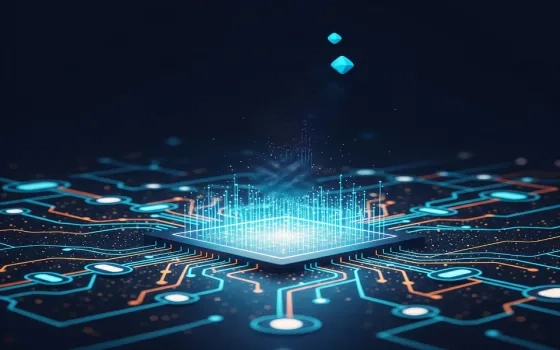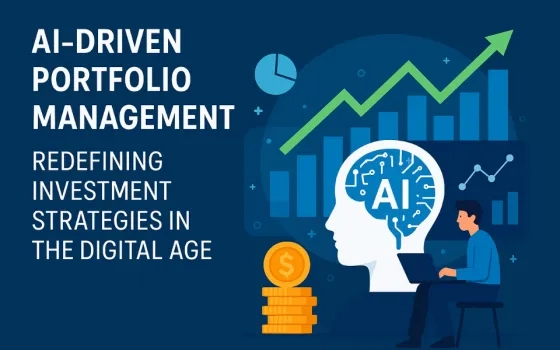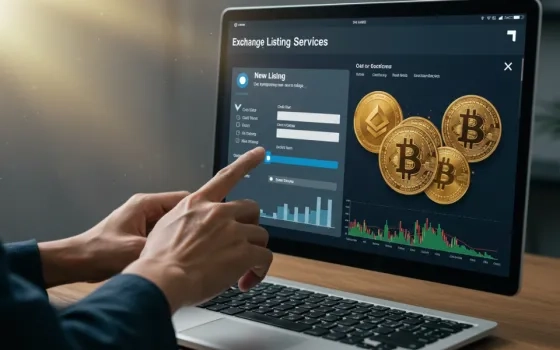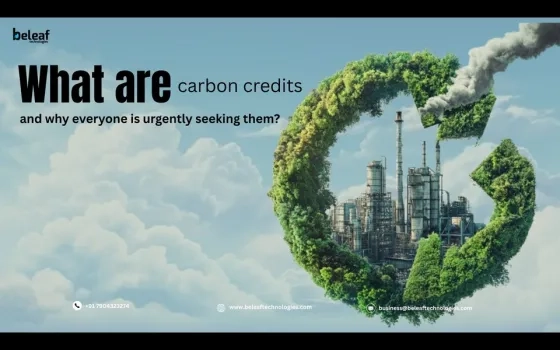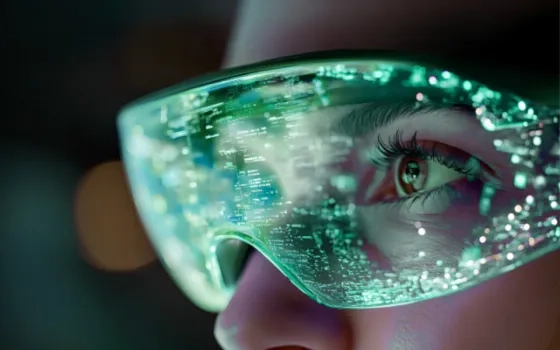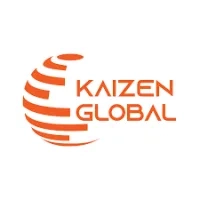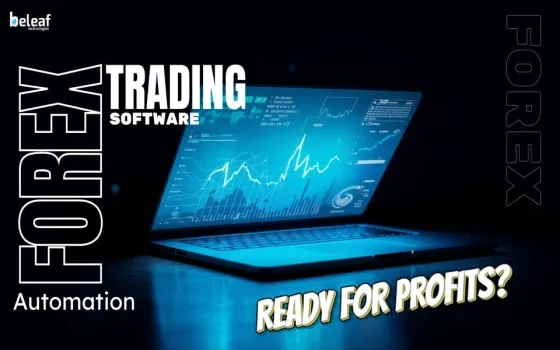How Blockchain Powers ICO Token Development in 2025
In 2025, blockchain technology continues to transform how startups and businesses raise funds through ICOs (Initial Coin Offerings). Unlike traditional fundraising methods that rely on banks, legal paperwork, and middlemen, ICOs allow companies to create and sell digital tokens directly to investors using blockchain. This process is faster, more transparent, and accessible to anyone with an internet connection.
Blockchain's key features - like decentralization, smart contracts, and security - make ICOs more reliable and trustworthy than ever before. With improved token standards, lower fees, and better regulatory frameworks, launching a successful ICO in 2025 has become easier for developers and safer for investors. In this blog, we’ll explore how blockchain powers the entire ICO development process and why it’s becoming a popular choice for funding innovation worldwide.
What Is an ICO?
Let’s start with the basics.
An ICO (Initial Coin Offering) is like a fundraising event where a company creates and sells its own digital tokens to raise money. These tokens can be used on their platform or traded like cryptocurrency. It’s similar to an IPO (Initial Public Offering) in the stock market, but without needing banks or stock exchanges.
People invest in ICOs using popular cryptocurrencies like Bitcoin or Ethereum. In return, they get tokens from the new project. If the project succeeds, the token value can go up, and that means profit for early supporters.
What Is Blockchain?
To understand how ICOs work, we need to understand blockchain.
A blockchain is like a digital notebook that stores information safely and openly. Every transaction (like sending money or buying tokens) is recorded in a block. These blocks are linked together in a chain, making it very hard to change or delete anything once it’s added.
Blockchain is:
- Decentralized: No single person or company controls it.
- Transparent: Everyone can see the transactions.
- Secure: It uses strong coding (cryptography) to protect data.
How Blockchain Helps ICO Token Development
Now, let’s get to the heart of the topic: how blockchain powers ICO token development in 2025.
1. Smart Contracts Make Everything Easier
In 2025, most ICOs utilize smart contracts, computer programs that run on the blockchain. They automatically do things when certain rules are met.
For example, a smart contract can say:
“If a user sends 1 ETH, give them 100 new tokens.”
This happens without any human help. It’s fast, fair, and saves time and money.
Smart contracts for ICOs help in:
- Automating token sales
- Distributing tokens safely
- Protecting against fraud
2. Token Standards Keep It Organized
There are rules (called token standards) that help developers create tokens easily and correctly. In 2025, the most used token standards are:
- ERC-20 (for Ethereum-based tokens)
- BEP-20 (for Binance Smart Chain)
- ERC-777 and newer ones that allow more features
These standards make sure that tokens work well with wallets, exchanges, and apps.
3. Faster and Cheaper Blockchains
In the past, blockchain platforms for ICOs like Ethereum were slow and expensive. But in 2025, newer blockchains like Solana, Polygon, Avalanche, and Cardano offer:
- Faster transactions
- Lower fees
- Better scalability
This makes ICOs more affordable and accessible for both companies and investors.
4. Better Security With Decentralization
Blockchain’s decentralized nature makes it hard for hackers to attack. Each computer (called a node) on the network has a copy of the data. According to the ICO token development company, if you hack it, someone would have to change all the copies at the same time, which is nearly impossible.
This gives investors more confidence in ICO projects. It also protects token holders from fraud or theft.
5. More Trust and Transparency
Everything on the blockchain is recorded forever. Anyone can see how many tokens were created, where they went, and how the money was used. This transparency builds trust.
In 2025, many ICOs will even show their funding wallet in real time so people can see how funds are being spent.
ICO Development Process in 2025
Let’s break down ICO token creation process using blockchain in 2025:
Step 1: Project Planning
The team decides what their token will do. Will it be used in a game? A financial app? A marketplace?
They also plan:
- How many tokens to create
- How much money to raise
- The token price and sale stages (private, public, etc.)
Step 2: Smart Contract Development
Next, they create a smart contract on a blockchain (like Ethereum). This contract handles:
- Token creation
- Sale rules
- Token distribution
- Security limits
Developers test this contract carefully before launching.
Step 3: Token Launch
Once everything is ready, the team announces the ICO. People can send cryptocurrency to the smart contract and receive tokens in return. This can last days or weeks, depending on the project.
Step 4: Token Listing on Exchanges
After the ICO, the new tokens are listed on crypto exchanges so people can buy, sell, or trade them. Projects also begin building the real product or service they promised in their whitepaper (a document explaining their plan).
The Rise of Regulated ICOs in 2025
One big change in 2025 is regulation. In the early days, anyone could launch an ICO without rules. This led to scams and failed projects.
Today, many governments have introduced laws to protect investors and improve the market. These include:
- KYC (Know Your Customer): Verifying who is investing
- AML (Anti-Money Laundering): Checking for illegal money use
- Token classification: Deciding if a token is a utility or a security
These steps might sound boring, but they help serious projects stand out—and protect regular people from being tricked.
Real-World Example in 2025
Let’s look at a fictional example.
EcoCoin is a startup in India that wants to reward people for planting trees. They launch an ICO on Polygon because it’s cheap and fast.
- They create a smart contract for EcoCoin tokens.
- They allow people to buy tokens using USDT (a stablecoin).
- The ICO raises $2 million in two weeks.
- Investors can later use EcoCoin to buy eco-friendly goods or get discounts on green services.
- The token is listed on major exchanges, and its value grows as more people use the platform.
Thanks to blockchain, EcoCoin can raise funds without needing a loan or giving up ownership.
Benefits of Blockchain in ICOs
Here’s a quick summary of why blockchain is so useful for ICO development:
|
Feature
|
Benefits of ICOs
|
|
Decentralization
|
No need for middlemen like banks or brokers
|
|
Transparency
|
Open records build trust with investors
|
|
Smart Contracts
|
Automated and secure token sales
|
|
Global Access
|
Anyone with internet can participate
|
|
Fast Transactions
|
Tokens are delivered in minutes, not days
|
|
Lower Costs
|
Less paperwork and lower transaction fee
|
Challenges to Watch Out For
Even in 2025, not everything is perfect. Here are some things to watch for:
- Scams: Some ICOs still promise too much and deliver little.
- Volatility: Token prices can go up or down quickly.
- Regulation: Some countries have strict rules, and others are still figuring it out.
- Technical Bugs: Poorly written smart contracts can lead to big losses.
This is why it's important to do your own research before investing in any ICO.
Conclusion
Blockchain scalability in ICOs has truly changed how new projects raise money, and in 2025, ICOs will be faster, safer, and more global than ever. With smart contracts, better blockchains, and clear rules, launching a token is now something many startups can do with confidence.
As blockchain technology in ICO development keeps improving, ICOs may become the new normal for startup funding, just like websites became a must-have in the 2000s.
Whether you're a developer, an investor, or just curious, understanding how ICO secure token development on blockchain and reliable blockchain development services can help you stay ahead in this fast-changing digital world.



